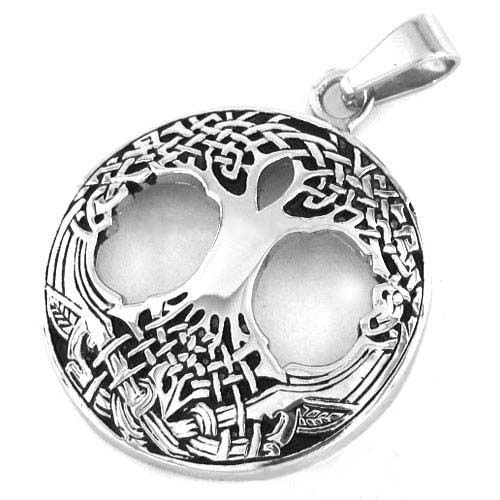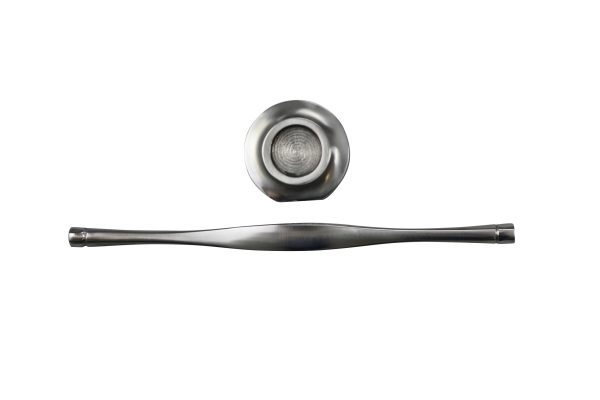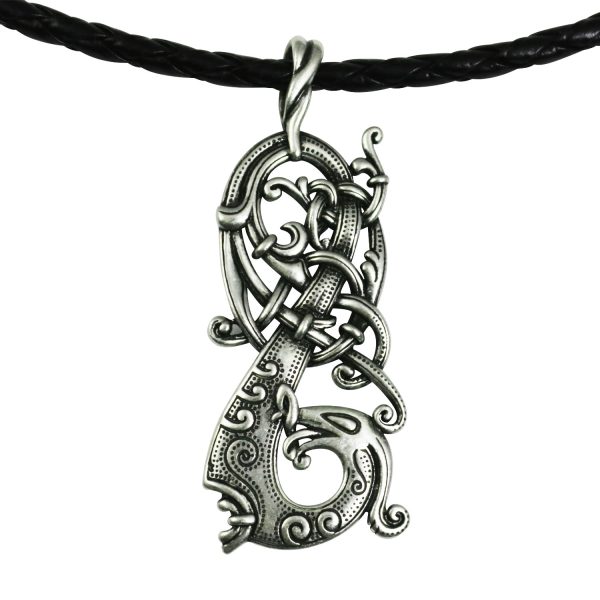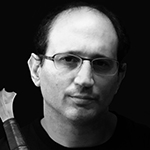-
×
 Celtic Tree of Life Pendant (#4014) 1 × CAD33.62
Celtic Tree of Life Pendant (#4014) 1 × CAD33.62 -
×
 Noman Sword Pommel & Guard 1 × CAD266.19
Noman Sword Pommel & Guard 1 × CAD266.19 -
×
 Oseberg Pendant (#4018) 1 × CAD168.12
Oseberg Pendant (#4018) 1 × CAD168.12
By Eyal Azerad
Simply stated, swords are made of many different types of metals, the most prevailing being steel. Although a proper steel is required for creating a high quality sword, many technical considerations, such as how the steel was prepared and processed, should also be factored. The following article will examine the most common blade materials used for the manufacture of European blades as it relates to the modern day sword industry and enucleate their merits and shortcomings.
In the lower spectrum are stainless steel swords; they are shiny, impervious to rust or corrosion and require minimal maintenance. Unfortunately however, they are also very brittle. These types of swords make for nice decorative pieces, but are not intended, nor are they adequate, for actual use. Stainless steel has a high content of chromium, often over 11 percent. Chromium is used as a grain enhancer and gives the steel it’s stainless properties. When a stainless steel blade is placed under tension, the molecular grain boundaries between the chromium and the steel begins to weaken. This in turn produces stress points causing the sword blade to become weak and brittle.
A superior sword blade material compared to that of stainless is carbon steel. Steel is an alloy consisting mainly of iron, carbon, and smaller amounts of other trace elements that are often present. Iron is the major component of steel but the amount of carbon added to the iron will determine significantly to the properties of the resultant steel. While steel is far stronger and more flexible than iron, the amount of carbon will have a direct impact on the functionality and underlining properties of the steel used for a sword blade. By varying the amount of carbon and its distribution in the alloy, the properties of the steel can be modified and carefully controlled. Currently, there are four grades of steel, categorized by the amounts of carbon content as outlined by The American Iron and Steel Institute (AISI).
The AISI uses a scale for steel which is the most commonly followed by sword makers. The most typical steel in sword making is plain carbon steel. The different classes of steel, based on their carbon contents, will have a direct impact on how the finished sword performs, how it holds an edge, and the degree of stress it can endure.
The four types of steel listed by the American Iron and Steel Institute are: Mild Steel, Medium Steel, High Carbon Steel, and Ultrahigh Carbon Steel. They are classified is as follows:
Mild Steel: contains .10 percent to .25 percent carbon
Medium Steel: contains .25 to .45 percent carbon
High Carbon Steel: contains .45 to .95 percent carbon
Ultrahigh Carbon Steel: contains .95 to 2.1 percent carbon.
Simply explained, Carbon Steel, or 1xxx series steel, is designated by four digits. The first indicates the main alloying element, (1) being Carbon, the second digit indicating the secondary alloying element, and the last two digits, ranging from 1 to 99, indicate the percentage of carbon present from .01 to .99. Hence, a blade made of 1045, is considered to be a plain-carbon steel, containing 0.45% carbon. Steels with carbon content ranging from 0.05 to 0.45 are low (i.e. mild & medium steel) carbon steels and would be designated as values between 1005 and 1045.
Swords made from 1045 steel are inexpensive to make as the low carbon makes them considerably softer, and therefore easier to manipulate. Being a soft steel, 1045 blades can be hand forged, pressed, or machine milled. A sword in the US $100 dollar range described as “High Carbon Steel” is most likely made of 1045 steel and they are almost definitely machine milled, and probably poorly tempered, if at all.
Another popular steel used in the bladesmithing industry is 1060. 1060 Carbon Steel is an exceptional compromise between 1045 and 1095 steels. Whereas 1045 falters due to its soft properties, 1060 sword blades, popular because of their durability, also retain a considerable amount of the edge holding ability found in swords made from 1095. 1060 is a harder steel than 1045, again due to its higher carbon content, and is therefore more difficult to forge and shape, and take longer to polish.
While 1095 will hold and maintain a sharper edge compared to steels with lower carbon content, unless properly quenched and tempered, European sword blades made with 1095 can be brittle due to their rigid nature. Although not overly fragile, 1095 steels are not as tough as 1060 blades due to the high levels of carbon content, rendering the blade too stiff for European-type combat.
That being said however, while steel is an important component of a high quality sword, how the steel is processed is equally important. Despite the quality of the steel, if poorly processed, the blade will falter on many levels. A sword must be normalized, quenched and differentially heat treated to produce a blade that is metallurgical manipulated for hardness, flexibility and toughness.
During the forging process, after the blade has been drawn (i.e. shaped), it must be quenched. The purpose of the quench, is to harden the blade by heating and rapidly cooling it. This affects the atomic structure of the steel by ‘freezing’ the carbon that can freely migrate while the steel is hot. The resulting steel following quench will contain iron carbide, a compound of iron and carbon, composed of 6.67% carbon and 93.9% iron.
During the process, the blade is heated until it glows a uniform dull orange, then it is generally plunged into a bath of either water or oil. The more rapidly a blade cools down, the harder it becomes. While water is more effective for knife making (blades quenched in water are harder) sword blades quenched in oil have superior flexibility.
While quenching is the most crucial step in the sword making process, the rapid change in temperature can also cause the blade to crack. If during the quenching, the blacksmith hears a “ping” or a “tink” it is an audible indication that the blade has cracked at some point along its length. Tempering is also time sensitive. If the blade is left in too long, it will get too hard and be brittle. If left in too short a time, the atomic structure of the steel will not be affected to a sufficient degree.
After the quench, the blade will be brittle and inflexible. To correct these insufficiencies, the blade must be heat treated. It must therefore be reheated to a specific temperature, determined by the type or properties of steel that is used. Imperfections in blade geometry can also be corrected during the process. After the blade has been reheated, it will then be cooled naturally.While the blade will have decreased edge holding capabilities, it will have a greater degree of flexibility and toughness. The bladesmith’s skill will guide him to perfectly balance the blade for toughness, hardness and flexibility.
After cooling the blade must be polished and fitted with a guard, pommel and handle. The point of balance (POB) will have to be carefully determined by the dynamics between the geometry and weight of the pommel and that of the blade. While the quality of the steel is essential to the medieval sword, the quench, tempering, tang construction and geometry and POB are all precision aspects that combine the harmonic balance of the sword.
About the author:
 Eyal Azerad is the founder of Darksword Armory. His lifelong dedication to the study of Medieval and Renaissance sword-making led to the creation of the business in 1996. Since, Eyal Azerad and Darksword have been involved in various movie and stage productions and was invited to give various educational conferences.
Eyal Azerad is the founder of Darksword Armory. His lifelong dedication to the study of Medieval and Renaissance sword-making led to the creation of the business in 1996. Since, Eyal Azerad and Darksword have been involved in various movie and stage productions and was invited to give various educational conferences.


